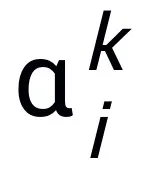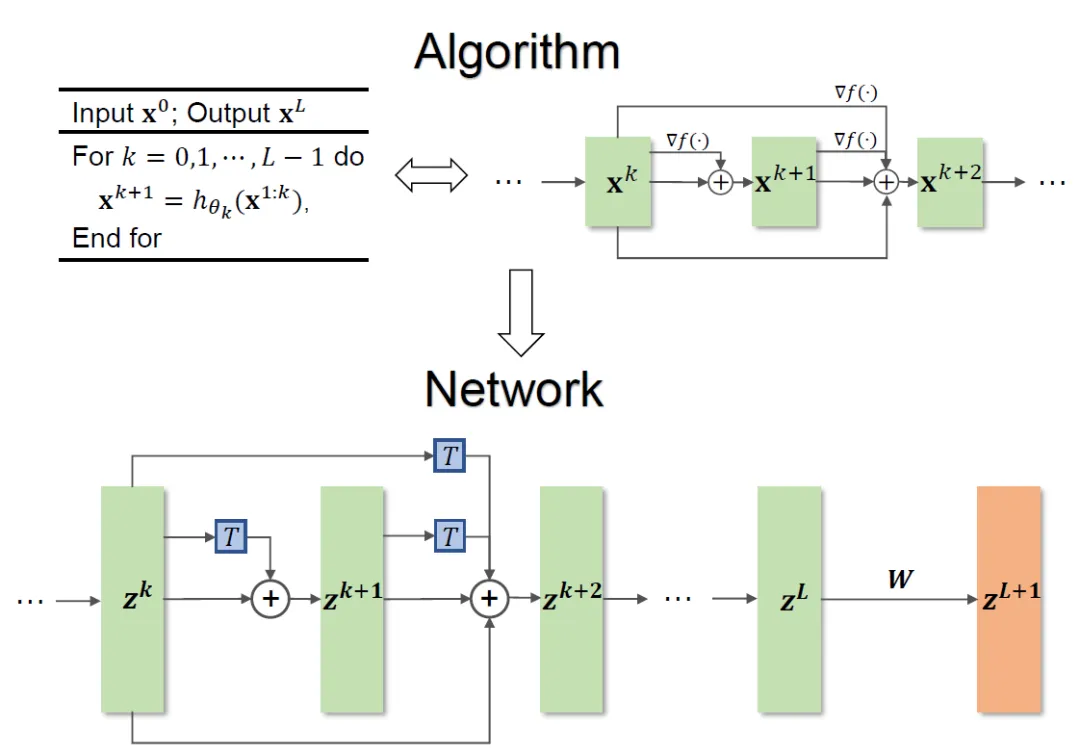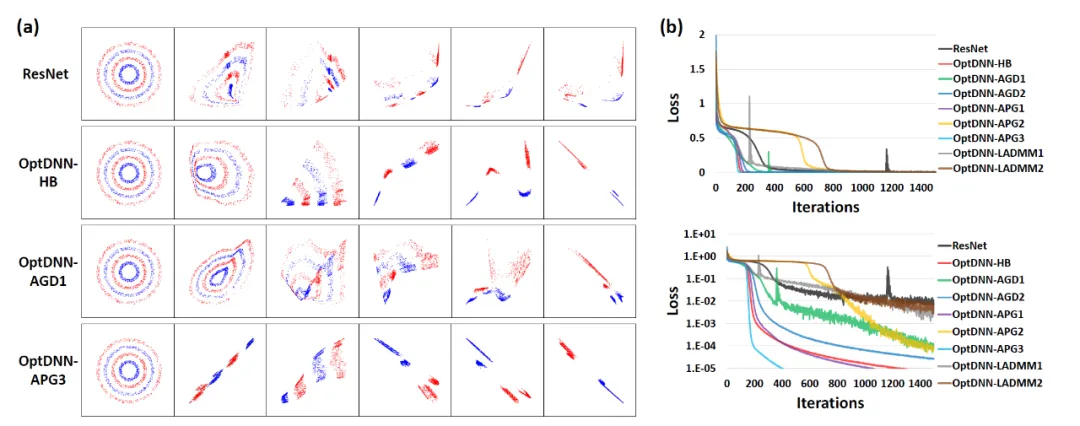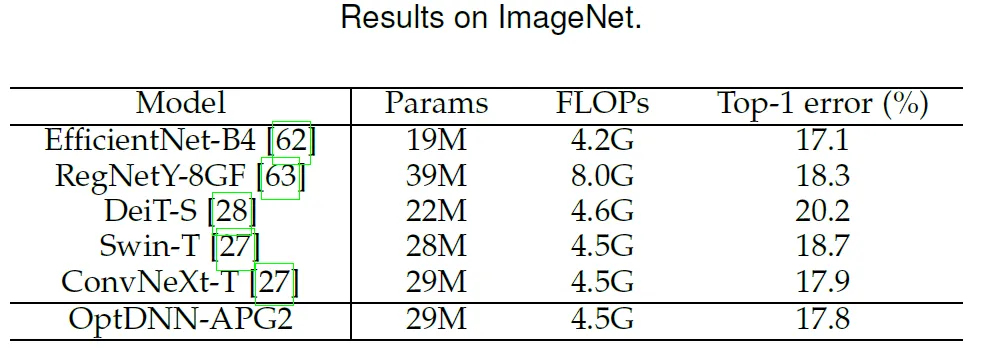 Technology peripherals
Technology peripherals
 AI
AI
 Inspired by the first-order optimization algorithm, Peking University Lin Zhouchen's team proposed a design method for neural network architecture with universal approximation properties
Inspired by the first-order optimization algorithm, Peking University Lin Zhouchen's team proposed a design method for neural network architecture with universal approximation properties
Inspired by the first-order optimization algorithm, Peking University Lin Zhouchen's team proposed a design method for neural network architecture with universal approximation properties
Neural network, as the basis of deep learning technology, has achieved effective results in many application fields. In practice, network architecture can significantly affect learning efficiency. A good neural network architecture can incorporate prior knowledge of the problem, establish network training, and improve computing efficiency. Currently, classic network architecture design methods include manual design, neural network architecture search (NAS) [1], and optimization-based network design methods [2]. Artificially designed network architectures such as ResNet, etc.; neural network architecture search searches for the best network structure in the search space through search or reinforcement learning; a mainstream paradigm in optimization-based design methods is algorithm unrolling. This method usually designs the network structure from the perspective of optimization algorithm with an explicit objective function. These methods design the network structure from the perspective of the optimization algorithm while designing the network structure from the perspective of the optimization algorithm.
Most of the current classical neural network architecture designs ignore the universal approximation of the network - this is one of the key factors for the powerful performance of neural networks. Therefore, these design methods lose the a priori performance guarantee of the network to a certain extent. Although the two-layer neural network has universal approximation properties when the width tends to infinity [3], in practice, we can usually only consider network structures with limited width, and the results of performance analysis in this area are very limited. In fact, it is difficult to consider the universal approximation property in network design, whether it is heuristic artificial design or black-box neural network architecture search. Although optimization-based neural network design is relatively more interpretable, it usually requires an obvious objective function, which results in a limited variety of designed network structures and limits its application scope. How to systematically design neural network architectures with universal approximation properties remains an important issue.
The team of Professor Lin Zhouchen of Peking University proposed a neural network architecture based on optimization algorithm design tools. This method combines the gradient-based first-order optimization algorithm with the hash-based second-order optimization. The combination of algorithms improves the training speed and convergence performance, and enhances the robustness guarantee of the neural network. This neural network module can also be used with existing modularity-based network design methods and continues to improve model performance. Recently, they analyzed the approximation properties of neural network differential equations (NODE) and proved that cross-layer connected neural networks have universal approximation properties. They also used the proposed framework to design variant networks such as ConvNext and ViT, and achieved results that exceeded the baseline. . The paper was accepted by TPAMI, the top artificial intelligence journal.

- ##Thesis: Designing Universally-Approximating Deep Neural Networks: A First-Order Optimization Approach
- Paper address: https://ieeexplore.ieee.org/document/10477580
Method introduction
Traditional based Optimized neural network design methods often start from an objective function with an explicit expression, use a specific optimization algorithm to solve it, and then map the optimization results to a neural network structure. For example, the famous LISTA-NN uses the LISTA algorithm to solve the LASSO problem. The resulting explicit expression converts the optimization results into a neural network structure [4]. This method has a strong dependence on the explicit expression of the objective function, so the resulting network structure can only be optimized for the explicit expression of the objective function, and there is a risk of designing assumptions that do not conform to the actual situation. Some researchers try to design the network structure by customizing the objective function and then using methods such as algorithm expansion, but they also require assumptions such as weight rebinding that may not necessarily meet the assumptions in actual situations. Therefore, some researchers have proposed using evolutionary algorithms based on neural networks to search for network architecture to obtain a more reasonable network structure.
The updated format of the network architecture design scheme should follow the idea of from the first-order optimization algorithm to the closer point algorithm and carry out gradual optimization. For example, the Euler angle algorithm can be changed to the quaternion algorithm, or a more efficient iterative algorithm can be used to approximate the solution. The updated format should consider increasing calculation accuracy and improving operating efficiency.

where  and
and  represent the (step length) coefficient at the kth step update, and then replace the gradient term with the learnable module T in the neural network, then Obtain the skeleton of the L-layer neural network:
represent the (step length) coefficient at the kth step update, and then replace the gradient term with the learnable module T in the neural network, then Obtain the skeleton of the L-layer neural network:

The overall method framework is shown in Figure 1.

Figure 1 Network design illustration
The method proposed in the paper can inspire the design of ResNet, DenseNet, etc. Classic network, and solves the problem that traditional methods based on optimization design of network architecture are limited to specific objective functions.
Module selection and architectural details
The network module T designed by this method only requires a two-layer network structure, that is,  , as its substructure, it can be guaranteed that the designed network has universal approximation properties, in which the width of the layer expressed is limited (that is, it does not randomly (increases with the improvement of approximation accuracy), the universal approximation properties of the entire network are not obtained by widening the
, as its substructure, it can be guaranteed that the designed network has universal approximation properties, in which the width of the layer expressed is limited (that is, it does not randomly (increases with the improvement of approximation accuracy), the universal approximation properties of the entire network are not obtained by widening the  layers. Module T can be the pre-activation block widely used in ResNet, or it can be the structure of the attention feed-forward layer in Transformer. The activation function in T can be common activation functions such as ReLU, GeLU, Sigmoid, etc. Corresponding normalization layers can also be added in according to specific tasks. In addition, when
layers. Module T can be the pre-activation block widely used in ResNet, or it can be the structure of the attention feed-forward layer in Transformer. The activation function in T can be common activation functions such as ReLU, GeLU, Sigmoid, etc. Corresponding normalization layers can also be added in according to specific tasks. In addition, when  , the designed network is an implicit network [5]. You can use fixed point iteration method to approximate the implicit format, or use implicit differentiation method to solve the gradient. renew.
, the designed network is an implicit network [5]. You can use fixed point iteration method to approximate the implicit format, or use implicit differentiation method to solve the gradient. renew.
Design more networks through equivalent representation
This method does not require that the same algorithm can only correspond to one Structure, on the contrary, this method can use the equivalent representation of the optimization problem to design more network architectures, reflecting its flexibility. For example, the linearized alternating direction multiplier method is often used to solve constrained optimization problems: 
 #The inspired network structure can be seen in Figure 2.
#The inspired network structure can be seen in Figure 2.

Figure 2 Network structure inspired by linearized alternating direction multiplier method

Inspiration The network has universal approximation properties
The network architecture designed by this method can prove that, under the condition that the module meets the previous conditions and the optimization algorithm (in general) is stable and convergent, the neural network inspired by any first-order optimization algorithm can perform in high-dimensional The continuous function space has universal approximation properties, and the approximation speed is given. For the first time, the paper proves the universal approximation properties of neural networks with general cross-layer connections under the limited width setting (previous research basically focused on FCNN and ResNet, see Table 1). The main theorem of the paper can be briefly described As follows: Main theorem (short version): Suppose In continuous (vector-valued) function space Commonly used T structures are: 1) In convolutional networks, pre-activation block: BN-ReLU-Conv-BN -ReLU-Conv (z), ##2) Transformer: Attn (z) MLP (z Attn (z)). The proof of the main theorem makes use of the universal approximation property of NODE and the convergence property of the linear multi-step method. The core is to prove that the network structure inspired by the optimization algorithm corresponds to the discretization of continuous NODE by a convergent linear multi-step method, so that The inspired network “inherits” the approximation capabilities of NODE. In the proof, the paper also gives the approximation speed of NODE to approximate a continuous function in d-dimensional space, which solves a remaining problem of the previous paper [6]. Table 1 Previous research on the properties of universal approximation basically focused on FCNN and ResNet The paper uses the proposed network architecture design framework to design 8 explicit networks and 3 implicit networks (called OptDNN). The network information is shown in Table 2, and is nested in Experiments were conducted on problems such as ring separation, function approximation and image classification. The paper also uses ResNet, DenseNet, ConvNext and ViT as baselines, uses the proposed method to design an improved OptDNN, and conducts experiments on the problem of image classification, considering the two indicators of accuracy and FLOPs. Table 2 Relevant information of the designed network First, OptDNN separates and Experiments are conducted on two problems of function approximation to verify its universal approximation properties. In the function approximation problem, the approximation parity function and Talgarsky function are considered respectively. The former can be expressed as a binary classification problem, and the latter is a regression problem. Both problems are difficult to be approximated by shallow networks. The experimental results of OptDNN in nested ring separation are shown in Figure 3, and the experimental results in function approximation are shown in Figure 3. OptDNN not only achieved good separation/approximation results, but also achieved greater results than ResNet as the baseline. The classification interval and smaller regression error are enough to verify the universal approximation properties of OptDNN. Figure 3 OptNN approximation parity function # #Figure 4 OptNN approximating the Talgarsky function Then, OptDNN conducted experiments on the image classification task on the CIFAR data set under two settings: wide-shallow and narrow-deep. The results See Tables 3 and 4. The experiments were all conducted under strong data augmentation settings. It can be seen that some OptDNN achieved smaller error rates than ResNet at the same or even smaller FLOPs overhead. The paper also conducted experiments under ResNet and DenseNet settings and achieved similar experimental results. Table 3 Experimental results of OptDNN under wide-shallow settings Table 4 Experimental results of OptDNN in narrow-deep settings The paper further selects the OptDNN-APG2 network that has performed well before, and further improves the performance of ConvNext and ViT. Experiments were conducted on the ImageNet data set under the following settings. The network structure of OptDNN-APG2 is shown in Figure 5, and the experimental results are shown in Tables 5 and 6. OptDNN-APG2 achieved an accuracy rate exceeding that of equal-width ConvNext and ViT, further verifying the reliability of this architecture design method. Figure 5 Network structure of OptDNN-APG2 Table 5 Performance comparison of OptDNN-APG2 on ImageNet Table 6 Performance comparison of OptDNN-APG2 with isotropic ConvNeXt and ViT Finally, the paper designed three implicit networks based on algorithms such as Proximal Gradient Descent and FISTA, and conducted experiments on the CIFAR data set with explicit ResNet and some commonly used implicit networks. For comparison, the experimental results are shown in Table 7. All three implicit networks achieved experimental results comparable to advanced implicit networks, which also illustrates the flexibility of the method. Table 7 Performance comparison of implicit networks Neural network architecture design is one of the core issues in deep learning. The paper proposes a unified framework for using first-order optimization algorithms to design neural network architectures with universal approximation properties, and expands the method based on the optimization design network architecture paradigm. This method can be combined with most existing architecture design methods that focus on network modules, and an efficient model can be designed with almost no increase in computational effort. In terms of theory, the paper proves that the network architecture induced by convergent optimization algorithms has universal approximation properties under mild conditions, and bridges the representation capabilities of NODE and general cross-layer connection networks. This method is also expected to be combined with NAS, SNN architecture design and other fields to design more efficient network architecture.  A is a gradient type First-order optimization algorithm. If algorithm A has the update format in formula (1) and satisfies the convergence condition (common step size selections for optimization algorithms all satisfy the convergence condition. If they are all learnable in the heuristic network, this condition is not required) , then a neural network inspired by the algorithm:
A is a gradient type First-order optimization algorithm. If algorithm A has the update format in formula (1) and satisfies the convergence condition (common step size selections for optimization algorithms all satisfy the convergence condition. If they are all learnable in the heuristic network, this condition is not required) , then a neural network inspired by the algorithm: 
 And it has universal approximation properties under the norm
And it has universal approximation properties under the norm  , where the learnable module T only needs to contain a two-layer structure of the form
, where the learnable module T only needs to contain a two-layer structure of the form  (σ can be a commonly used activation function ) as its substructure.
(σ can be a commonly used activation function ) as its substructure. 
Experimental results









Summary
The above is the detailed content of Inspired by the first-order optimization algorithm, Peking University Lin Zhouchen's team proposed a design method for neural network architecture with universal approximation properties. For more information, please follow other related articles on the PHP Chinese website!

Hot AI Tools

Undresser.AI Undress
AI-powered app for creating realistic nude photos

AI Clothes Remover
Online AI tool for removing clothes from photos.

Undress AI Tool
Undress images for free

Clothoff.io
AI clothes remover

Video Face Swap
Swap faces in any video effortlessly with our completely free AI face swap tool!

Hot Article

Hot Tools

Notepad++7.3.1
Easy-to-use and free code editor

SublimeText3 Chinese version
Chinese version, very easy to use

Zend Studio 13.0.1
Powerful PHP integrated development environment

Dreamweaver CS6
Visual web development tools

SublimeText3 Mac version
God-level code editing software (SublimeText3)

Hot Topics
 1392
1392
 52
52
 36
36
 110
110
 Open source! Beyond ZoeDepth! DepthFM: Fast and accurate monocular depth estimation!
Apr 03, 2024 pm 12:04 PM
Open source! Beyond ZoeDepth! DepthFM: Fast and accurate monocular depth estimation!
Apr 03, 2024 pm 12:04 PM
0.What does this article do? We propose DepthFM: a versatile and fast state-of-the-art generative monocular depth estimation model. In addition to traditional depth estimation tasks, DepthFM also demonstrates state-of-the-art capabilities in downstream tasks such as depth inpainting. DepthFM is efficient and can synthesize depth maps within a few inference steps. Let’s read about this work together ~ 1. Paper information title: DepthFM: FastMonocularDepthEstimationwithFlowMatching Author: MingGui, JohannesS.Fischer, UlrichPrestel, PingchuanMa, Dmytr
 The world's most powerful open source MoE model is here, with Chinese capabilities comparable to GPT-4, and the price is only nearly one percent of GPT-4-Turbo
May 07, 2024 pm 04:13 PM
The world's most powerful open source MoE model is here, with Chinese capabilities comparable to GPT-4, and the price is only nearly one percent of GPT-4-Turbo
May 07, 2024 pm 04:13 PM
Imagine an artificial intelligence model that not only has the ability to surpass traditional computing, but also achieves more efficient performance at a lower cost. This is not science fiction, DeepSeek-V2[1], the world’s most powerful open source MoE model is here. DeepSeek-V2 is a powerful mixture of experts (MoE) language model with the characteristics of economical training and efficient inference. It consists of 236B parameters, 21B of which are used to activate each marker. Compared with DeepSeek67B, DeepSeek-V2 has stronger performance, while saving 42.5% of training costs, reducing KV cache by 93.3%, and increasing the maximum generation throughput to 5.76 times. DeepSeek is a company exploring general artificial intelligence
 AI subverts mathematical research! Fields Medal winner and Chinese-American mathematician led 11 top-ranked papers | Liked by Terence Tao
Apr 09, 2024 am 11:52 AM
AI subverts mathematical research! Fields Medal winner and Chinese-American mathematician led 11 top-ranked papers | Liked by Terence Tao
Apr 09, 2024 am 11:52 AM
AI is indeed changing mathematics. Recently, Tao Zhexuan, who has been paying close attention to this issue, forwarded the latest issue of "Bulletin of the American Mathematical Society" (Bulletin of the American Mathematical Society). Focusing on the topic "Will machines change mathematics?", many mathematicians expressed their opinions. The whole process was full of sparks, hardcore and exciting. The author has a strong lineup, including Fields Medal winner Akshay Venkatesh, Chinese mathematician Zheng Lejun, NYU computer scientist Ernest Davis and many other well-known scholars in the industry. The world of AI has changed dramatically. You know, many of these articles were submitted a year ago.
 Slow Cellular Data Internet Speeds on iPhone: Fixes
May 03, 2024 pm 09:01 PM
Slow Cellular Data Internet Speeds on iPhone: Fixes
May 03, 2024 pm 09:01 PM
Facing lag, slow mobile data connection on iPhone? Typically, the strength of cellular internet on your phone depends on several factors such as region, cellular network type, roaming type, etc. There are some things you can do to get a faster, more reliable cellular Internet connection. Fix 1 – Force Restart iPhone Sometimes, force restarting your device just resets a lot of things, including the cellular connection. Step 1 – Just press the volume up key once and release. Next, press the Volume Down key and release it again. Step 2 – The next part of the process is to hold the button on the right side. Let the iPhone finish restarting. Enable cellular data and check network speed. Check again Fix 2 – Change data mode While 5G offers better network speeds, it works better when the signal is weaker
 Hello, electric Atlas! Boston Dynamics robot comes back to life, 180-degree weird moves scare Musk
Apr 18, 2024 pm 07:58 PM
Hello, electric Atlas! Boston Dynamics robot comes back to life, 180-degree weird moves scare Musk
Apr 18, 2024 pm 07:58 PM
Boston Dynamics Atlas officially enters the era of electric robots! Yesterday, the hydraulic Atlas just "tearfully" withdrew from the stage of history. Today, Boston Dynamics announced that the electric Atlas is on the job. It seems that in the field of commercial humanoid robots, Boston Dynamics is determined to compete with Tesla. After the new video was released, it had already been viewed by more than one million people in just ten hours. The old people leave and new roles appear. This is a historical necessity. There is no doubt that this year is the explosive year of humanoid robots. Netizens commented: The advancement of robots has made this year's opening ceremony look like a human, and the degree of freedom is far greater than that of humans. But is this really not a horror movie? At the beginning of the video, Atlas is lying calmly on the ground, seemingly on his back. What follows is jaw-dropping
 KAN, which replaces MLP, has been extended to convolution by open source projects
Jun 01, 2024 pm 10:03 PM
KAN, which replaces MLP, has been extended to convolution by open source projects
Jun 01, 2024 pm 10:03 PM
Earlier this month, researchers from MIT and other institutions proposed a very promising alternative to MLP - KAN. KAN outperforms MLP in terms of accuracy and interpretability. And it can outperform MLP running with a larger number of parameters with a very small number of parameters. For example, the authors stated that they used KAN to reproduce DeepMind's results with a smaller network and a higher degree of automation. Specifically, DeepMind's MLP has about 300,000 parameters, while KAN only has about 200 parameters. KAN has a strong mathematical foundation like MLP. MLP is based on the universal approximation theorem, while KAN is based on the Kolmogorov-Arnold representation theorem. As shown in the figure below, KAN has
 The vitality of super intelligence awakens! But with the arrival of self-updating AI, mothers no longer have to worry about data bottlenecks
Apr 29, 2024 pm 06:55 PM
The vitality of super intelligence awakens! But with the arrival of self-updating AI, mothers no longer have to worry about data bottlenecks
Apr 29, 2024 pm 06:55 PM
I cry to death. The world is madly building big models. The data on the Internet is not enough. It is not enough at all. The training model looks like "The Hunger Games", and AI researchers around the world are worrying about how to feed these data voracious eaters. This problem is particularly prominent in multi-modal tasks. At a time when nothing could be done, a start-up team from the Department of Renmin University of China used its own new model to become the first in China to make "model-generated data feed itself" a reality. Moreover, it is a two-pronged approach on the understanding side and the generation side. Both sides can generate high-quality, multi-modal new data and provide data feedback to the model itself. What is a model? Awaker 1.0, a large multi-modal model that just appeared on the Zhongguancun Forum. Who is the team? Sophon engine. Founded by Gao Yizhao, a doctoral student at Renmin University’s Hillhouse School of Artificial Intelligence.
 FisheyeDetNet: the first target detection algorithm based on fisheye camera
Apr 26, 2024 am 11:37 AM
FisheyeDetNet: the first target detection algorithm based on fisheye camera
Apr 26, 2024 am 11:37 AM
Target detection is a relatively mature problem in autonomous driving systems, among which pedestrian detection is one of the earliest algorithms to be deployed. Very comprehensive research has been carried out in most papers. However, distance perception using fisheye cameras for surround view is relatively less studied. Due to large radial distortion, standard bounding box representation is difficult to implement in fisheye cameras. To alleviate the above description, we explore extended bounding box, ellipse, and general polygon designs into polar/angular representations and define an instance segmentation mIOU metric to analyze these representations. The proposed model fisheyeDetNet with polygonal shape outperforms other models and simultaneously achieves 49.5% mAP on the Valeo fisheye camera dataset for autonomous driving



